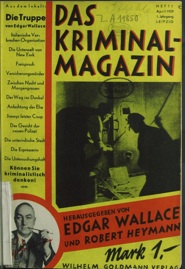Mag Mods tends to spend a lot of time on magazines, but it’s important to remember just how valuable a resource newspapers are for historical research into modernism (and, I guess, other stuff). A couple of years ago, I was teaching a freshman seminar on taste. We read a chapter out of Jonah Lehrer’s Proust Was a Neuroscientist one week, in which Lehrer basically argues that the reason there was a riot at the premiere of Le Sacre du printemps on May 29, 1913, was that the neurons of the brains of audience members could not process the music and, as a result, released large amounts of dopamine to quell their–the neurons’–anxiety, which ended up creating a kind of schizophrenic state in the audience. In a nutshell, Lehrer’s argument was that Stravinsky’s modernist masterpiece literally drove the Paris audience mad. For an audio version of this tale, complete with plenty of bullshit and errors, listen to it on Radiolab.
Lehrer, of course, was revealed this past year to be a bullshit journalist. This seems to have been a big shock in some quarters, but anyone who read his past work, with its simplistic use of science to explain culture, with a modicum of skepticism would have been ready for the revelations. My freshman quickly picked up on the implausibility of his claims in the Stravinsky essay, and less than an hour of research in the digital archive of the London Times confirmed their skepticism. Lehrer attributes the riot at the premier of the Rite to the formal qualities of the music. If he’s right, then the music should have the same effect on any audience unprepared to listen to it. However, as I discuss in a recent piece, the London premiere of Le Sacre went off with virtually no disturbance. This was an audience who could not have been prepared for the performance by recordings, and yet, their neurons dwelt with the piece just fine.
So, what’s this have to do with newspapers? If Lehrer and the many other critics who have celebrated the 100th anniversary of The Rite of Spring by nostalgically lamenting the glory days of modernism, when art could still shock, if they had just done a quick search of newspapers, they would have realized that the riot was basically a manufactured event, driven more by cultural and social tensions as well as marketing than by the so-called difficulty of Le Sacre.
 Really exciting news here. There’s a new site specializing in digitized versions of German magazines from the 1st half of the 20th century. Here’s the description Illustrierte Presse provides on its site.
Really exciting news here. There’s a new site specializing in digitized versions of German magazines from the 1st half of the 20th century. Here’s the description Illustrierte Presse provides on its site.
Nothing’s Shocking: The Importance of Digitized Newspapers and the Stupidity of Jonah Lehrer
Mag Mods tends to spend a lot of time on magazines, but it’s important to remember just how valuable a resource newspapers are for historical research into modernism (and, I guess, other stuff). A couple of years ago, I was teaching a freshman seminar on taste. We read a chapter out of Jonah Lehrer’s Proust Was a Neuroscientist one week, in which Lehrer basically argues that the reason there was a riot at the premiere of Le Sacre du printemps on May 29, 1913, was that the neurons of the brains of audience members could not process the music and, as a result, released large amounts of dopamine to quell their–the neurons’–anxiety, which ended up creating a kind of schizophrenic state in the audience. In a nutshell, Lehrer’s argument was that Stravinsky’s modernist masterpiece literally drove the Paris audience mad. For an audio version of this tale, complete with plenty of bullshit and errors, listen to it on Radiolab.
Lehrer, of course, was revealed this past year to be a bullshit journalist. This seems to have been a big shock in some quarters, but anyone who read his past work, with its simplistic use of science to explain culture, with a modicum of skepticism would have been ready for the revelations. My freshman quickly picked up on the implausibility of his claims in the Stravinsky essay, and less than an hour of research in the digital archive of the London Times confirmed their skepticism. Lehrer attributes the riot at the premier of the Rite to the formal qualities of the music. If he’s right, then the music should have the same effect on any audience unprepared to listen to it. However, as I discuss in a recent piece, the London premiere of Le Sacre went off with virtually no disturbance. This was an audience who could not have been prepared for the performance by recordings, and yet, their neurons dwelt with the piece just fine.
So, what’s this have to do with newspapers? If Lehrer and the many other critics who have celebrated the 100th anniversary of The Rite of Spring by nostalgically lamenting the glory days of modernism, when art could still shock, if they had just done a quick search of newspapers, they would have realized that the riot was basically a manufactured event, driven more by cultural and social tensions as well as marketing than by the so-called difficulty of Le Sacre.
Leave a comment
Posted in Commentary